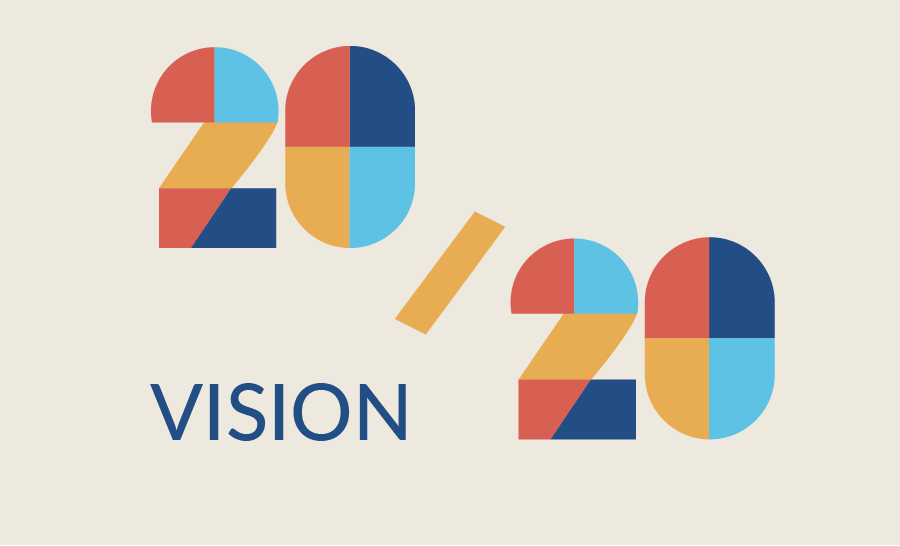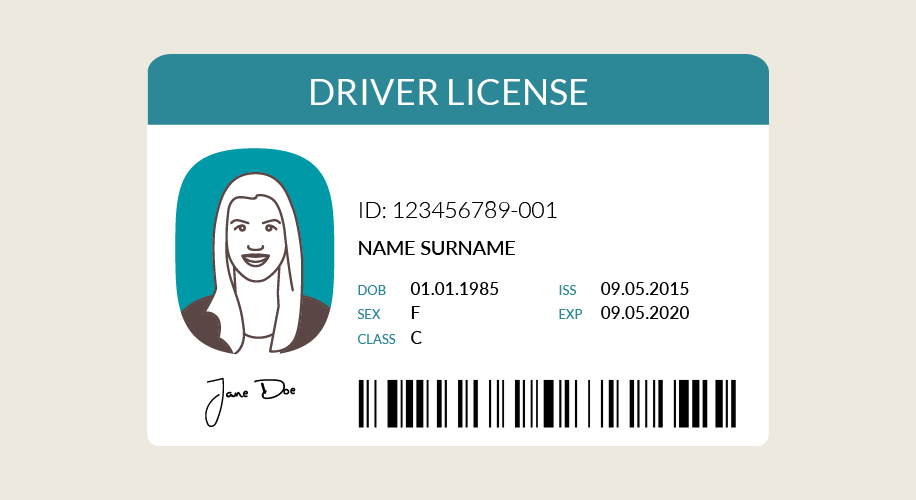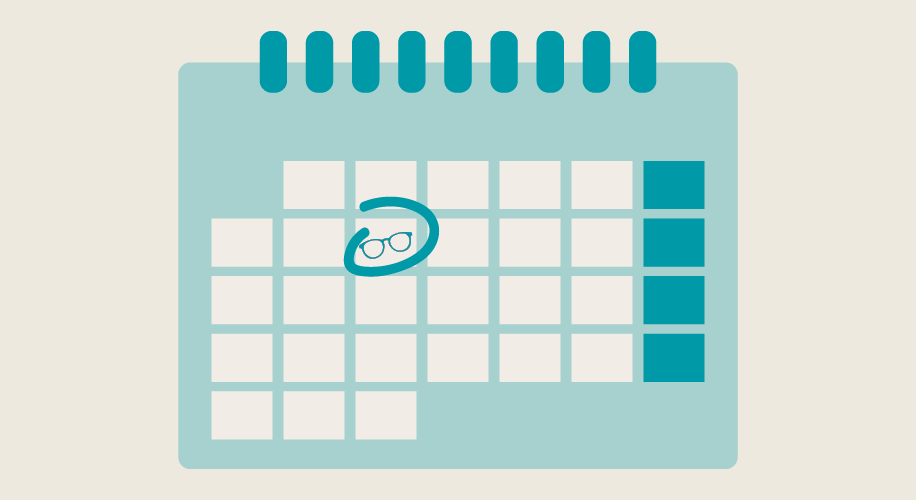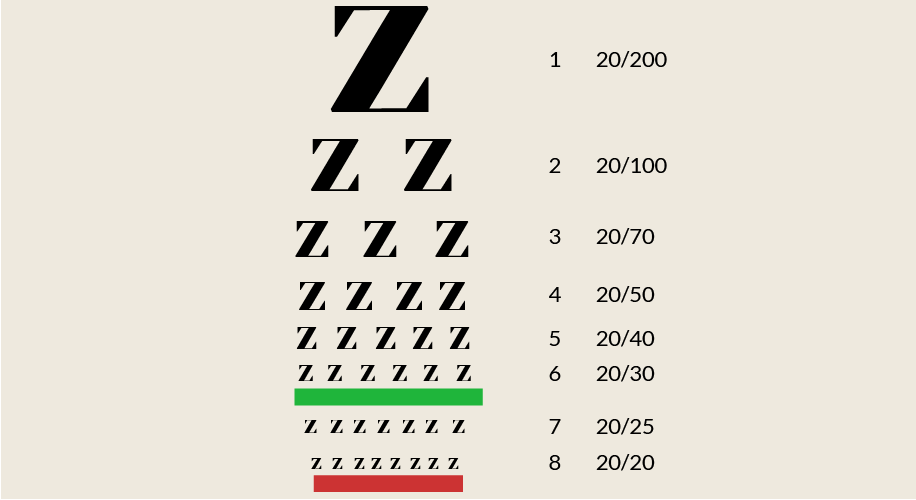Visual Acuity: The True Meaning of 20/20 Vision
- BY Zenni Optical
- IN Eye Care

Most people correlate the term “20/20 vision” to mean ‘perfect’ vision. The truth is, there is no such thing as perfect vision. This is because how clearly you are able to see depends on an array of factors, such as depth perception, contrast, side vision, color vision, and eye muscle coordination. So why exactly do we strive for 20/20 and what scale is it measured on? Read on to find out.
What is Visual Acuity?
Visual acuity refers to how close a person needs to be to clearly see an object that’s placed 20 feet away from them. A person with 20/20 vision can see what an average person can see on an eye chart when they are standing 20 feet away. Let’s break this down a little more, the top number in the fraction refers to the distance in feet that you stand from the chart and the bottom number indicates the distance at which a person with normal eyesight can read the same line you correctly read. So if you have a visual acuity of 20/80, it means that you’re able to see details at 20 feet away from the same object as a person with 20/20, or normal vision, could see from 80 feet away.
How Is Visual Acuity Measured?
We’ve all been asked to cover one eye and read different size numbers and letters from a chart while getting our eyes examined. That is because the eye care specialist is measuring our visual acuity. Since many doctors don’t have 20 feet of space in their office, it is common to use a projector and a mirror to display the chart instead.
The most used chart for checking vision is a Snellen Eye Chart. This is the chart with the large E at the top, that most of us have encountered at a doctor’s office. The chart was named after ophthalmologist Herman Snellen. More than 150 years after it was invented, it’s still one of the most commonly used techniques to measure a person’s visual acuity.
Is Bad Vision Common?
According to a survey performed by the National Institute of Health (NIH), half of the U.S. population aged 20 years and older sees worse than 20/20 vision and therefore needs some type of glasses correction. So if you have a 20/20 vision, congratulations on being one step closer to becoming a fighter pilot. If not, you are definitely not in the minority, but should still make it a priority to see an eye doctor.

Do I Need Perfect Vision to Get A Driver’s License?
In order to get a driver’s license in the U.S., a person must have a minimum corrected visual acuity of 20/40 in at least one eye. To have 20/40 vision you need to read at least the 5th line down on the Snellen Chart. If you need glasses to achieve 20/40 then you will have this indicated on your driver’s license. If you don’t pass these minimum requirements, you can still apply for a restricted use license, but these requirements vary state to state.

Schedule Your Eye Exam Annually
It is recommended to have your eyes examined yearly. If you haven’t had an eye exam in a while, don’t wait to schedule your next appointment. If you’ve noticed a change in your vision or if your prescription isn’t providing your visual field with the same sharpness it used to, your eyes have probably changed.
Once you have your new prescription, start shopping for your new favorite pair of Zenni frames. Wearing an old prescription can end up causing further harm to your eyes in the long run.
Having a tough time making sense of your prescription? /how-to-read-my-eye-prescription”>Here are some tips and common prescription types to help you navigate it.
